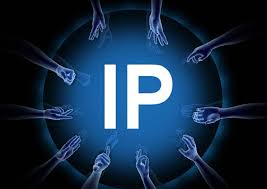INTERNET PROTOCOL
The Internet is a computer network made up of thousands of networks worldwide. No one knows exactly how many computers are connected to the Internet. It is certain, however, that these number in the millions and are increasing at a rapid rate. All computers on the Internet communicate with one another using the Transmission Control Protocol/Internet Protocol suite, abbreviated to TCP/IP. Computers on the Internet use client/server architecture. This means that the remote server machine provides files and services to the user’s local client machine. Software can be installed on a client computer to take advantage of the latest access technology.
Internet protocols are sets of rules that allow for communication on the Internet. The following major protocols are accessible on the Web:
- E-mail (Simple Mail Transport Protocol or SMTP)
Distributes electronic messages and files to one or more electronic mailboxes
- Telnet (Telnet Protocol)
Facilitates login to a computer host to execute commands
- FTP (File Transfer Protocol)
Transfers text or binary files between an FTP server and client
- Usenet (Network News Transfer Protocol or NNTP)
Distributes Usenet news articles derived from topical discussions on newsgroups
- HTTP (Hyper Text Transfer Protocol)
Transmits hypertext over networks. This is the protocol of the WWW.
IP is a required TCP/IP standard defined in RFC 791, “Internet Protocol (IP).” IP is a connectionless, unreliable datagram protocol primarily responsible for addressing and routing packets between hosts.
Connectionless means that a session is not established before exchanging data. Unreliable means that delivery is not guaranteed. IP always makes a best-effort attempt to deliver a packet. An IP packet might be lost, delivered out of sequence, duplicated, or delayed. IP does not attempt to recover from these types of errors. The acknowledgment of packets delivered and the recovery of lost packets is the responsibility of a higher-layer protocol, such as TCP. An IP packet, also known as an IP datagram, consists of an IP header and an IP payload, as shown in the following illustration. The IP header contains the following fields for addressing and routing:
Table 3.1: IP header function
| IP header field | Function |
Source IP address | The IP address of the original source of the IP datagram. |
Destination IP address | The IP address of the final destination of the IP datagram. |
Time-to-Live (TTL) | Designates the number of network segments on which the datagram is allowed to travel before being discarded by a router. The TTL is set by the sending host and is used to prevent packets from endlessly circulating on an IP internetwork. When forwarding an IP packet, routers are required to decrease the TTL by at least 1 |
TCP ports
TCP ports use a specific program port for delivery of data sent by using Transmission Control Protocol (TCP). TCP ports are more complex and operate differently from UDP ports.
While a UDP port operates as a single message queue and the network endpoint for UDP-based communication, the final endpoint for all TCP communication is a unique connection. Each TCP connection is uniquely identified by dual endpoints.
Each single TCP server port is capable of offering shared access to multiple connections because all TCP connections are uniquely identified by two pairs of IP address and TCP ports (one address/port pairing for each connected host).
TCP programs use reserved or well-known port numbers, as shown in the following illustration.
The server side of each program that uses TCP ports listens for messages arriving on their well-known port number. All TCP server port numbers less than 1,024 (and some higher numbers) are reserved and registered by the Internet Assigned Numbers Authority (IANA).The following table is a partial list of some well-known TCP server ports used by standard TCP-based programs.
Table 3.2: Different TCP ports
TCP port number | Description |
20 | FTP server (data channel) |
21 | FTP server (control channel) |
23 | Telnet server |
53 | Domain Name System zone transfers |
80 | Web server (HTTP) |
139 | NetBIOS session service |
IP addressing
Each TCP/IP host is identified by a logical IP address. This address is unique for each host that communicates by using TCP/IP. Each 32-bit IP address identifies a location of a host system on the network in the same way that a street address identifies a house on a city street.
Just as a street address has a standard two-part format (a street name and a house number), each IP address is separated internally into two parts—a network ID and a host ID.
IP address classes
The Internet community has defined five address classes. Class A, B, and C addresses are used for assignment to TCP/IP nodes.
The class of address defines which bits are used for the network and host ID parts of each address. The address class also defines how many networks and hosts per network can be supported.
The following table uses w.x.y.z to designate the four octet values in any given IP address. The table is used to show:
Table 3.3: IP address classes
















